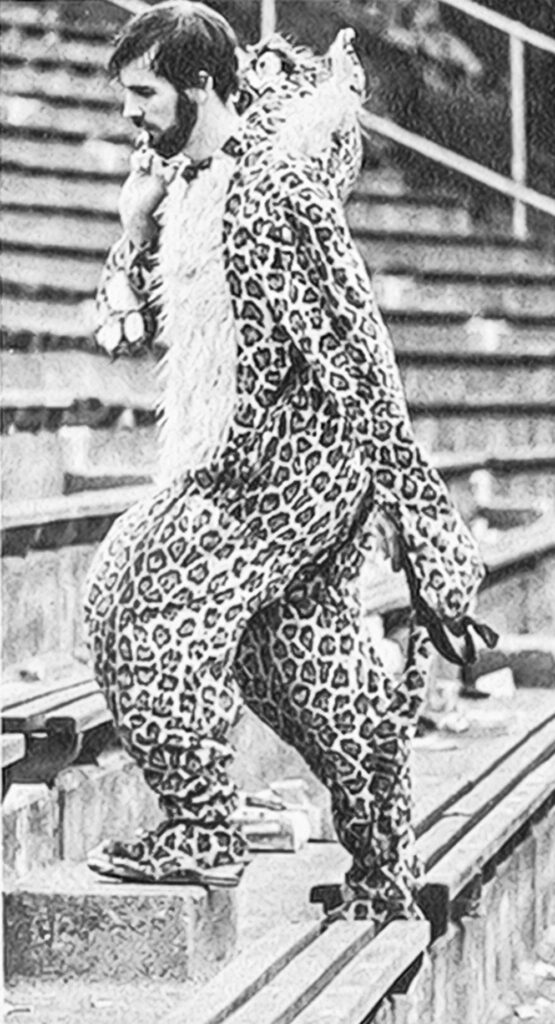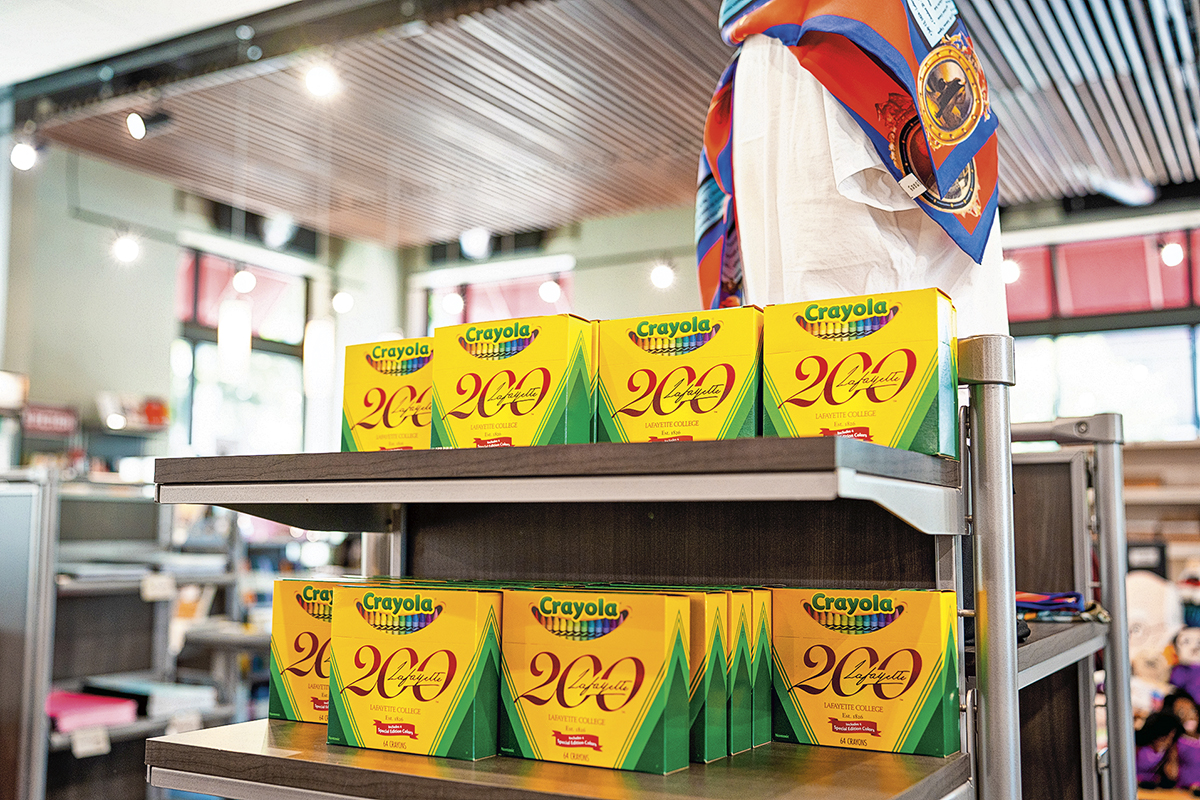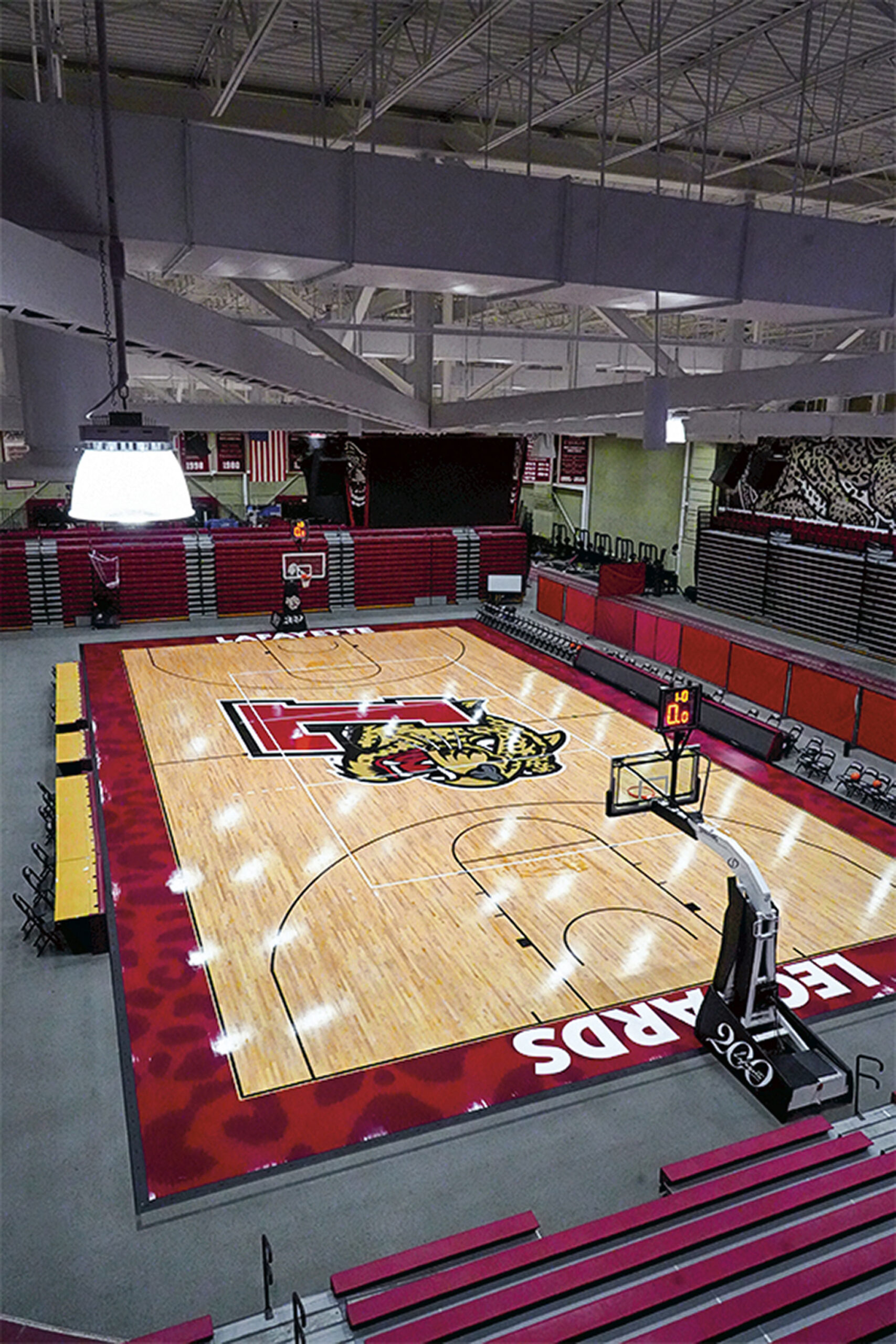A Leopard’s legacy
Celebrating Lafayette’s spirited mascot, which turned 100 years young this fall.

Photograph Adam Atkinson
When a leopard mascot turned up at a couple of Lafayette’s football games in 1923, it instantly charged the College’s fanbase with its spots, swagger, and stealth.
One year later, in fall 1924, the student council voted to make the Leopard the official mascot of Lafayette. And the big cat, now known as Roary, has embodied Lafayette fan spirit in the 100 years since that decision—and shows no sign of slowing down.
“Mascots play a significant role by serving as a symbol of school spirit and community, and I can proudly say that the Leopard embodies those qualities,” says Sherryta Freeman, director of athletics, noting that its ferocity also fits well from a competitive standpoint. “Having a mascot that people are drawn to brings a different layer to the collegiate athletics experience.”
The Lafayette Leopard was part of a litter of wild woodland beasts that emerged on campuses in the early 20th century, including the Columbia University Lion (1910), Princeton University Tiger (1911), and University of New Hampshire Wildcat (1926). However, all these years later, the Leopard still stands alone: Among the hundreds of schools that have adopted mascot nicknames, Lafayette remains the only NCAA Division I athletics program with the leopard as its symbolic namesake.
Diane Shaw, director emerita of Special Collections and College Archives, has noted the alliterative properties of “Lafayette Leopard” may have influenced the choosing of the mascot as much as the collegiate cat movement. Before the leopard was canonized, Lafayette teams had simply been referred to as “The Maroon,” a reference to one of the school’s official colors.
Nowadays, Roary makes more than 50 appearances a year both on and off campus, and a handler is always nearby to help with the costume and make sure there’s proper hydration, especially on warm days.
“It takes a physically fit person to do this,” says Dave Blasic, athletic business manager, who keeps an eye out for Roary’s well-being. “You are the very representation of Lafayette, not just athletics. Kids are drawn to you. Parents are drawn to you. You have to be on all the time. That takes a lot of stamina.”
The Sept. 23, 1955, edition of The Lafayette introduced Richard Faust ’56 in his new role as the Leopard mascot and the “revolutionary new” costume with its swiveling eyes and spring-loaded tail. Student council had appropriated $250 the year before to purchase the suit.
“I’ll never forget how the crowd exploded with cheers when I ran onto Fisher Field as the Leopard for that Lafayette-Muhlenberg College game,” he says about his debut on Sept. 24, 1955.
“That Leopard suit was produced at a Walt Disney studio, a big heavy unit, probably 70 pounds,” he recalls. “I stood 7 feet in it with the head on and looked out onto the field and surveyed the crowds out of a hole in the mouth. It was always a thrill. I had the best view of anyone.”
“It’s been a great tradition for 100 years,” Faust says, “and I’m proud to have been part of the stories and the legacy.”
Playing the Leopard was a natural fit for Faust, who arrived at Lafayette in 1952 from The Peddie School in Hightstown, N.J., where he served on the cheer squad. Always enjoying whipping up school spirit, he enlisted as a Lafayette cheerleader in his freshman year and, at the urging of his squad members, eagerly accepted the role of the Leopard.
Strutting and cavorting through the stands, Faust never experienced a dull moment. Now 90 years old and living on an apple orchard outside Binghamton, N.Y., he recalls a standout moment from an Oct. 1, 1955, football game against Carnegie Tech at the former Forbes Field in Pittsburgh.
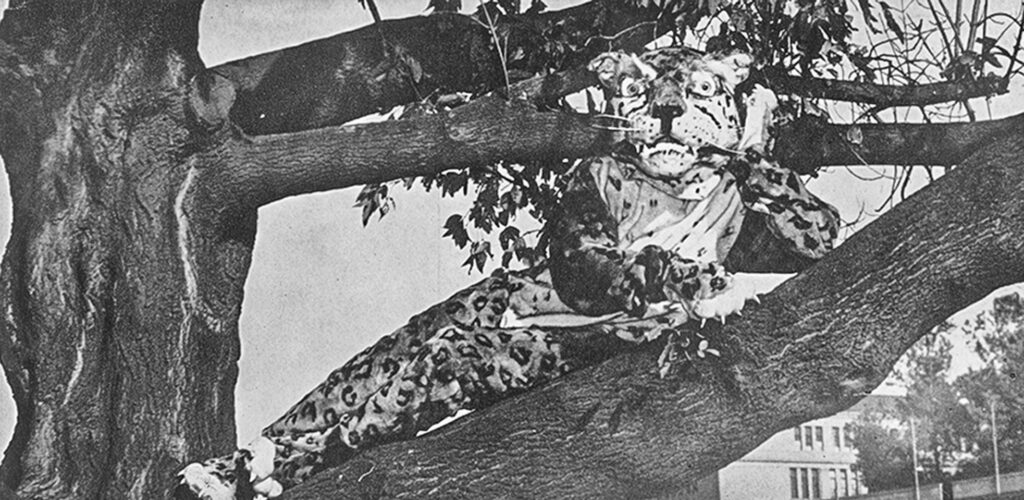
“We hadn’t established an awful lot of the rules and regulations relating to what I could and could not do,” he says. “I remember they brought the homecoming queen out in a little wagon pulled by a pony. And she got out onto the middle of the field and waved to the crowd. Well, I couldn’t let that pass, so I snuck out there and crawled into the wagon with her, and there were all kinds of hoots and hollers from the stadium.”
When Faust returned to the sidelines, he took off the Leopard head to get some air. He remembers it was an unusually warm October day.
“Someone grabbed the head and took off into the stadium,” he recalls. “I couldn’t catch him with the rest of that suit on, but our bus driver caught the guy and brought the head back to me. After that game, they said, ‘no more taking you and the suit to away games,’ thinking ahead to Lehigh, which would have just been a disaster if I tried to do that.”
Hijinx aside, Faust says there’s just something about the Leopard that brings out school spirit. “It’s been a great tradition for 100 years, and I’m proud to have been part of the stories and the legacy,” he says.
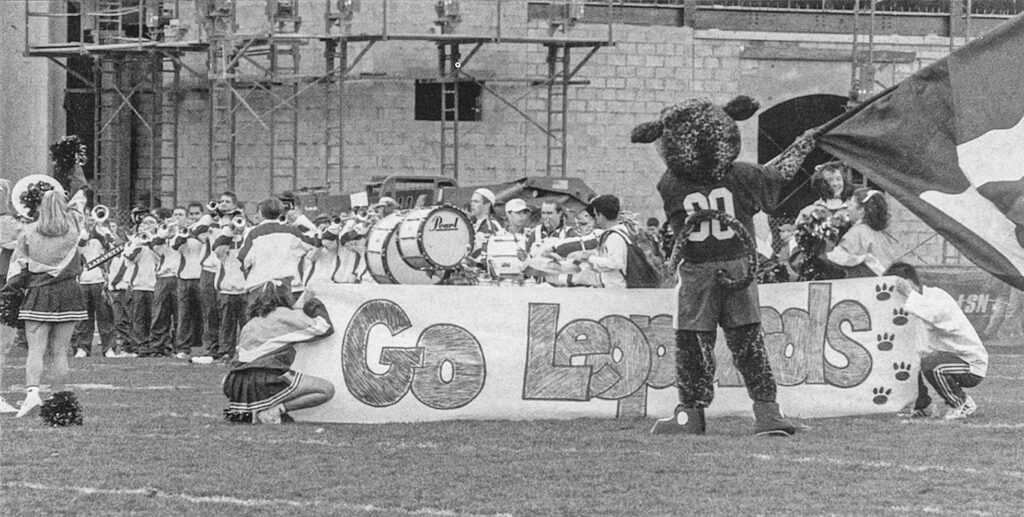
As a retired custodian at the Bourger Varsity Football House at Fisher Stadium, Rick Fisher stepped into the Leopard costume in 2006 after encountering the mascot during a block party. Fisher was with his son, who was about 5 years old at the time, and it was before the first home game of the season. After seeing the mascot, Fisher considered the potential in the Leopard identity. “People can interpret the character in different ways,” he says, noting that he saw an opportunity to truly engage and connect with Lafayette fans.
A longtime rodeo clown in the Nazareth area, Fisher has a gift for making people laugh and smile. He approached George Bright, then the associate director of athletics at Lafayette, and asked how someone gets selected to portray the Leopard.
“I told him I was a rodeo clown, the funny man, the guy telling jokes in between things,” he recalls. “I remember George handing me the costume with instructions to ‘take it to the next level.’”
So began a 15-year run, from 2006 to 2021, portraying the Leopard and inspiring Pard pride at dozens of events a year—football games, tailgates, basketball games, and on-campus and community events and festivals.
As Fisher approached retirement, the physical demands of the role kept him in good shape, from the pushups after each touchdown and field goal to handling the weight of the Lafayette flag, which, when unfurled in a stiff fall breeze, requires a strong pair of arms. (“It was like pushing a truck in the wind,” he says.)
Mascot Timeline
As the Leopard never speaks, only struts, the hardest part of the job for Fisher was staying silent. “I couldn’t speak—and that was hard for a guy who loved telling jokes,” he laughs.
His biggest thrill was the 150th edition of The Rivalry between Lafayette and Lehigh before a packed Yankee Stadium on Nov. 22, 2014. Lafayette won the day, 27-7.
Fisher reflects that the goal was to sell out the bottom level of the stadium, but the game sold out in a few weeks, and the teams ultimately played to a full house of nearly 50,000 spectators.
The key to being a successful Leopard is interacting with kids, Fisher says, and even the prankish ones who are prone to pull its tail.
“Sometimes a big cat approaching them is scary,” he says. “But I’d kneel down, from far enough away, and then I’d shake their hand and do a fist bump. Then came a laugh or a smile. That was always a victory in my book.”
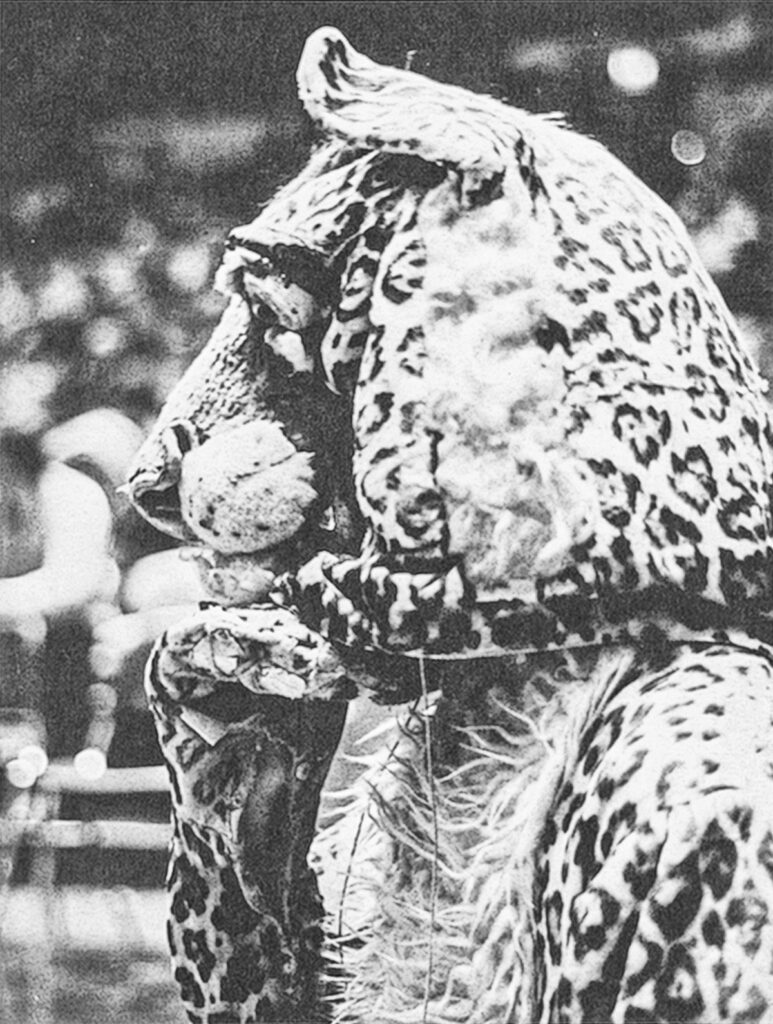
When Fisher retired from the costume, Dysean Alexander, associate director of West Coast admissions and ROTC liaison, took over as the Leopard. He was the first person to portray the mascot with its new name, “Roary,” which was approved by a student and fan vote last year.
“I was attending an admissions event in 2021, and we wanted the Leopard to come and greet potential students, take photos with them and all that fun stuff,” he says. “It was at that point we learned that Rick was retiring and we had no one to replace him.” Everyone looked to Alexander, who seemed to have the energy and natural stage presence to pull off the job successfully.
“I saw the opportunity as a way to help out the admissions team,” he recalls. “It would also be my first time attending a Lafayette-Lehigh game at Fisher Stadium. I grew up in the Bethlehem area and always knew about The Rivalry but never had a chance to experience it.”
When he stepped out on the field, all of the Lafayette energy hit him at once. “Suddenly, I knew what it all meant,” Alexander says, “and I knew I had made the right choice by putting on the costume.”
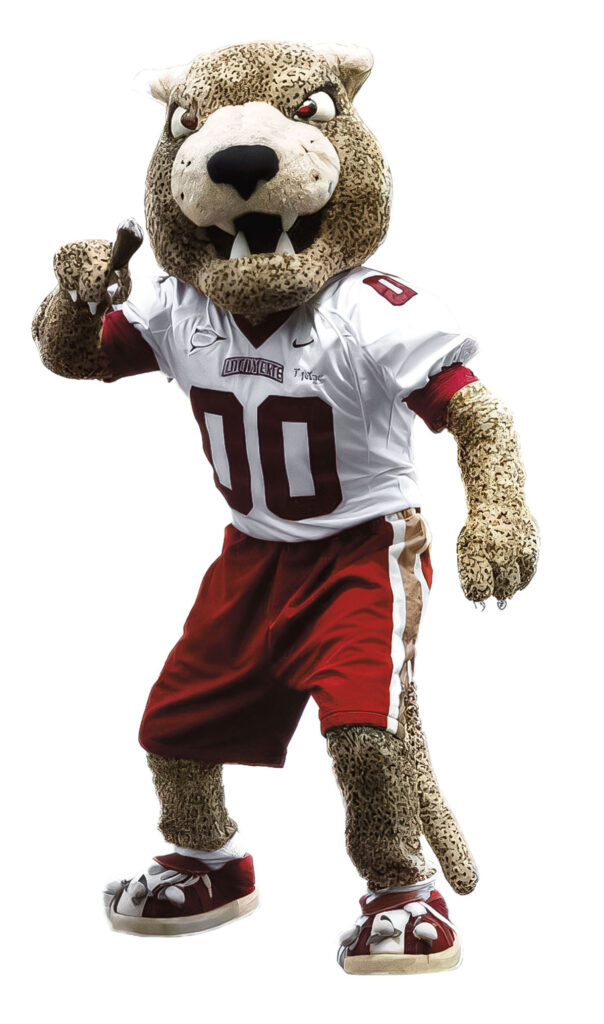
Like Fisher, Alexander has a knack for making people laugh. He’s a stand-up comedian on the side and had experience playing a lion mascot during his high school days at nearby Moravian Academy in Bethlehem, Pa. All of these transferable skills helped with his interpretation of Roary.
“I do a lot of physical comedy on stage, which translates really well with Roary, who doesn’t speak,” Alexander says. “That physical movement helped me in those close interactions with fans, especially at basketball games because they’re close to the court. Making little kids and adults giggle and laugh, while pulling out their best spirit for Lafayette, regardless of whether the team is winning or losing, that’s what it’s all about.”
“I would occasionally try to look for my tail, turning this way and that way, and getting dizzy. I always loved that routine,” he adds. “Roary wears sneakers, which makes him able to be a lot more agile and do more things.”
Alexander turned over the Roary costume this year when he moved to the West Coast. “The presence of Roary has really grown on campus, as shown by all the fans, students, and staff on campus who wear leopard prints,” he says. “Roary definitely inspires a lot of passion on the campus and a lot of excitement. I had a great run and will never forget it.”
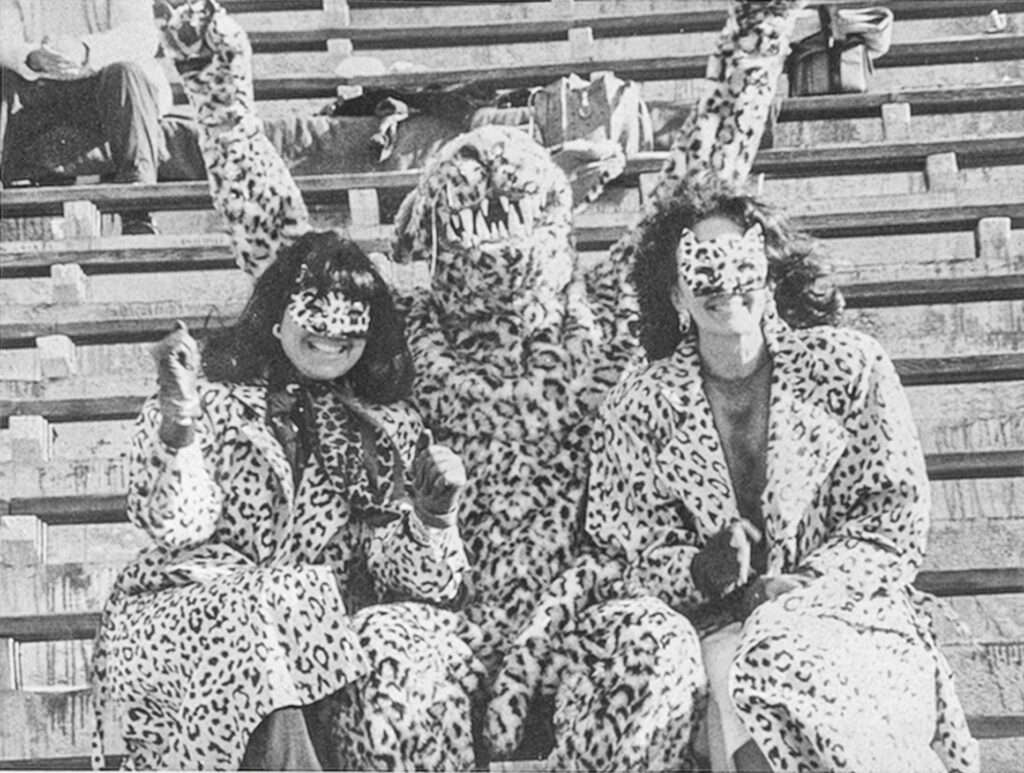
Alexander Cruz ’28, who just took over as Roary this fall, was not bashful at all when he first inquired about how he could volunteer for the job.
“When I came to campus for Prologue, the overnight event for accepted students, I noticed that Dysean was the mascot,” he remembers. “So, I had asked him, ‘How do I become Roary?’” Alexander put Cruz in touch with the Athletics Department, sharing that Cruz had experience playing the bulldog at KIPP NYC College Prep High School in the Bronx.
Cruz enjoys bringing movement and gesture into his interpretation of the character.
“It’s very important to be moving around a lot, for example, when they start playing music at a sports event,” he says. “Since you’re not able to speak, I try to be energetic when I’m in the suit and run across the field. I dance with cheerleaders, learn their moves, and use that energy to get the crowds fired up.”
To Cruz, Roary is what a college mascot should be: engaged and instantly recognizable to fans. “School spirit is big at Lafayette,” he says, “and doing Roary is fun. It gives me an excuse to dance—I love doing salsa and bachata.”
A sports enthusiast and a member of the wrestling club, the computer science major hopes to portray Roary for his entire time at Lafayette.
“When I put on that suit, my mindset shifts,” Cruz says. “A lot of talented, dedicated folks have come and gone before me. It’s a big responsibility to represent Lafayette. You have to bring your best.”
Send us your Leopard memories: lafayettemagazine@lafayette.edu.
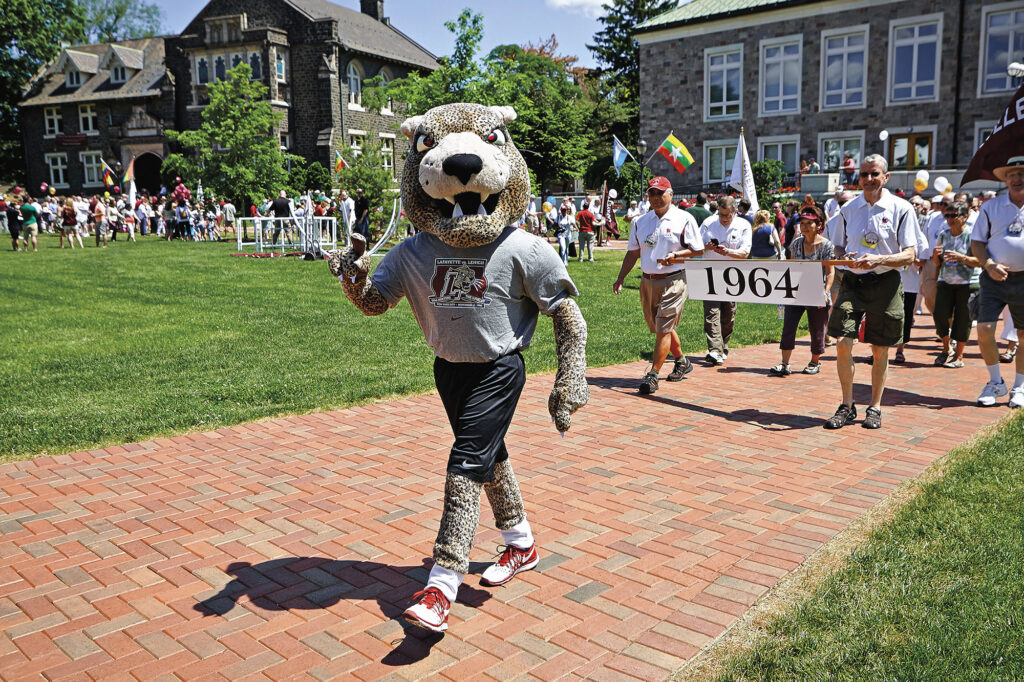


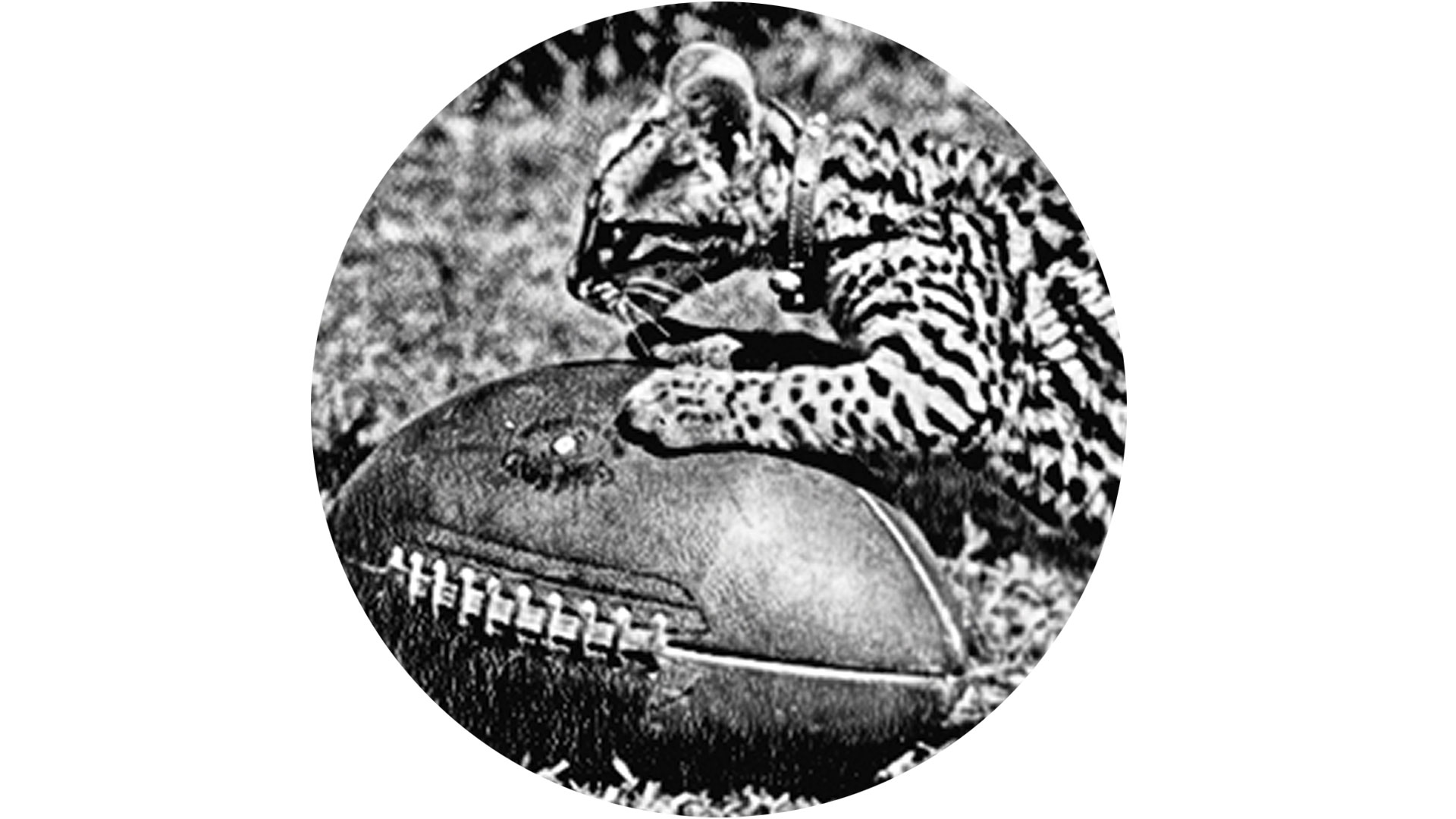
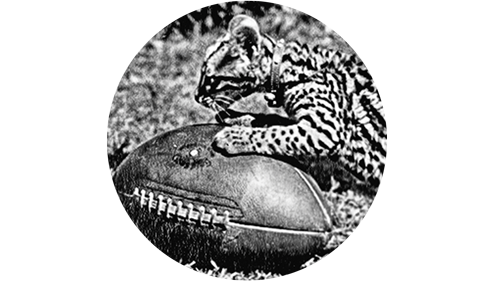
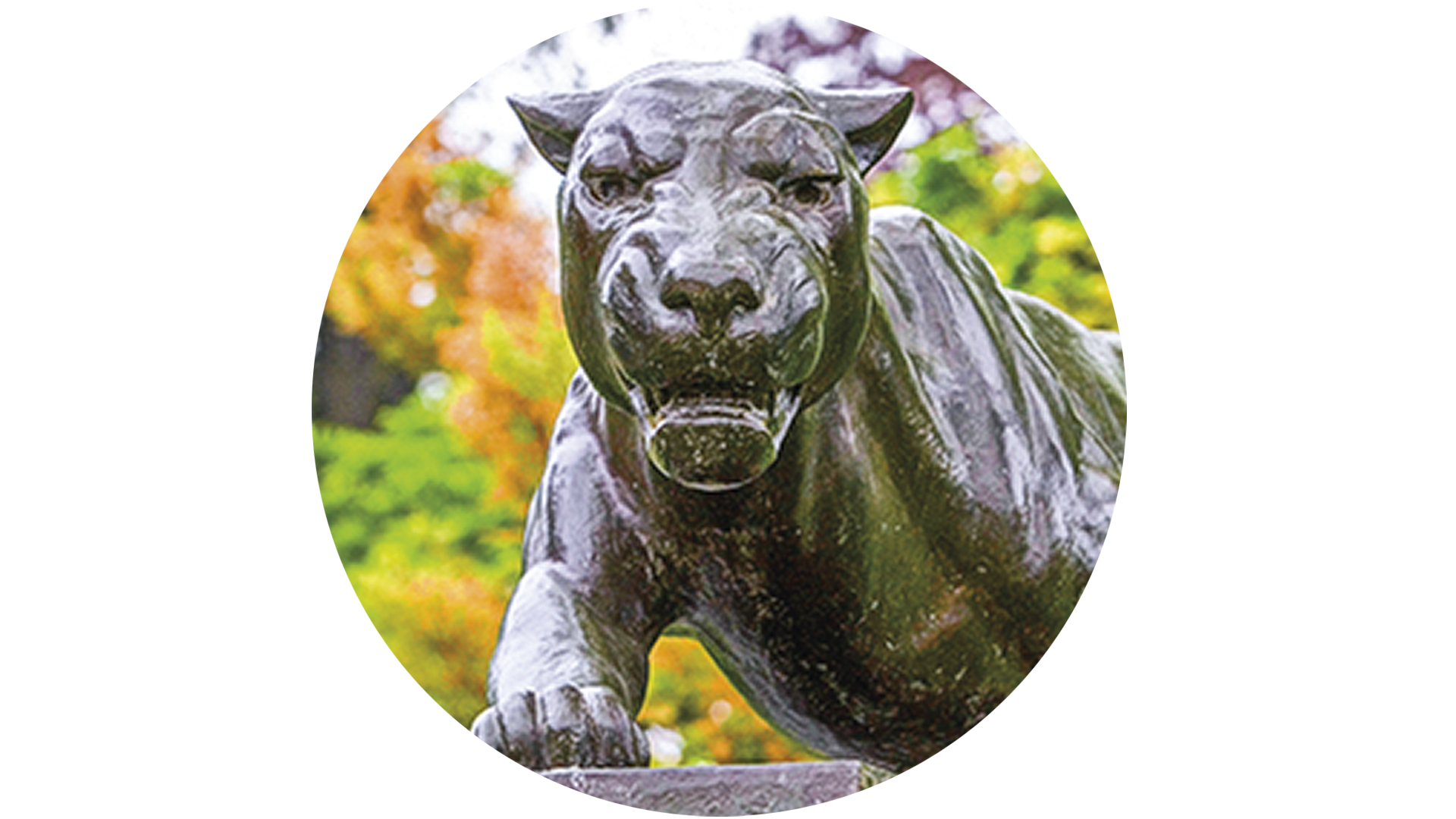
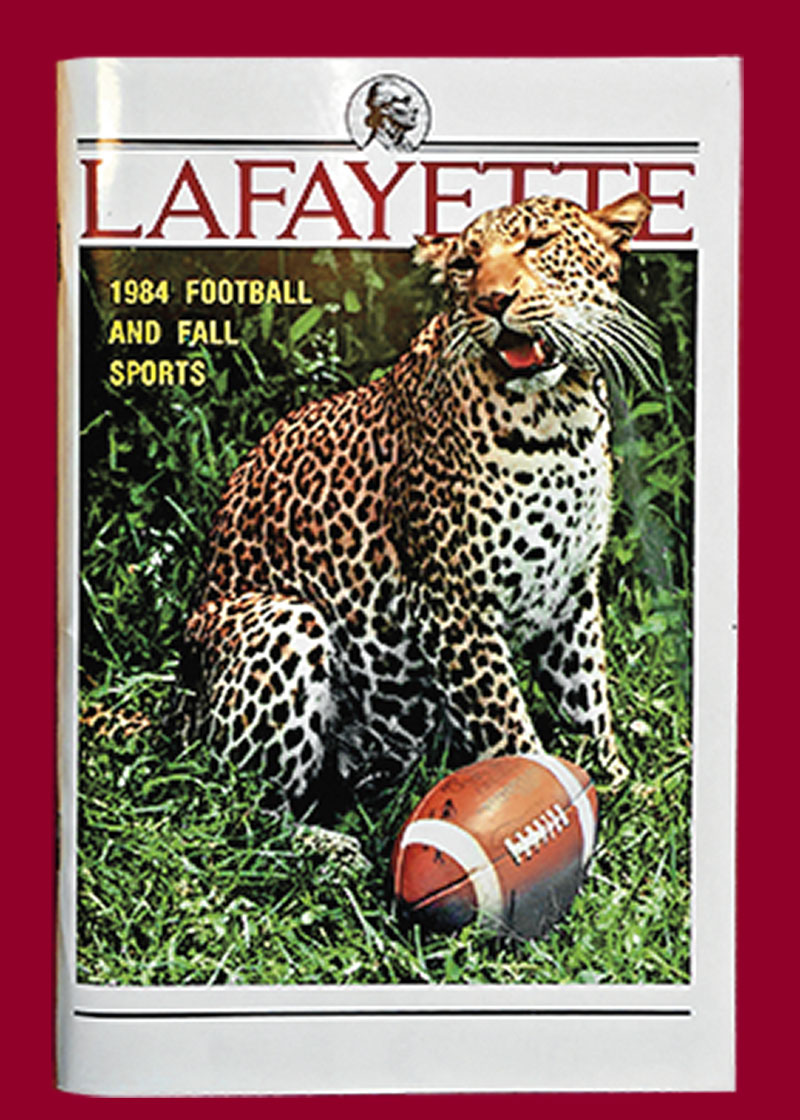 A leopard is brought to campus for a photo shoot for the 1984 Lafayette football media guide.
A leopard is brought to campus for a photo shoot for the 1984 Lafayette football media guide.  Lafayette students and fans vote to name the mascot “Roary.”
Lafayette students and fans vote to name the mascot “Roary.”
